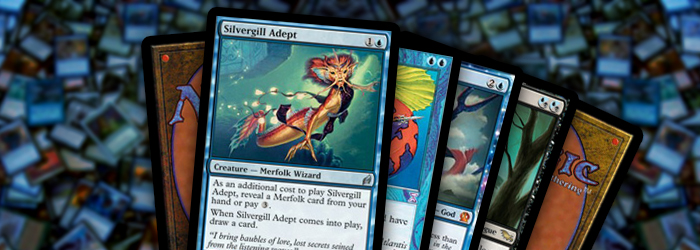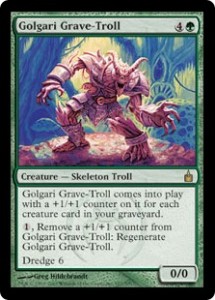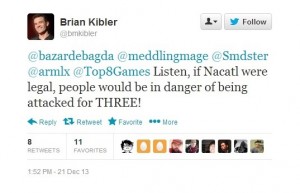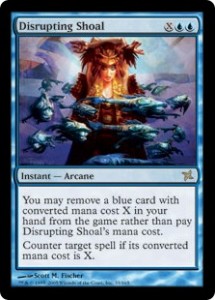This article is a continued exploration of what a Return to Ravnica/Gatecrash/Dragon’s Maze/M14/Theros Commander format might look like. Previous articles in this series covered basic deck design principles available in the format and what each of the mono-colored decks might contain. When [card]Jarad, Golgari Lich Lord[/card] was spoiled as a set preview in the Izzet vs. Golgari Duel Deck, many Golgari fans anticipated using this extremely strong guild leader. When Return to Ravnica was fully spoiled, all the guild leaders seemed to be strong contenders for Commander. Later, Dragon’s Maze and Theros would add further options. Despite having a Standard-only card pool, these legendary creatures still represent some interesting deck construction possibilities.
Azorius
A white-blue Standard Commander appears to best be served by adhering to its stereotypical control archetype by playing a singular, but effective, threat and protecting it with removal, counterspells, and board wipes. The best generals for this strategy are [card]Medomai the Ageless[/card] and [card]Isperia, Supreme Judge[/card]. [card]Lavinia of the Tenth[/card] is a weak choice because there are no flicker effects in the environment with which to repeatedly detain the lower-costed permanents on the board.
With control and card draw in mind, the deck build below runs no fewer than four [card]Ophidian[/card]-type creatures in addition to [card]Bident of Thassa[/card]. If possible, play an [card]Ophidian[/card] creature early and hit an undefended opponent repeatedly to draw into counter magic. Counterspells should be used to stop gods, primordials, board wipes that negatively impact your board state, and any other game-changing spells. An [card]Elite Arcanist[/card] imprinted with a counterspell that sticks will be a powerful play that only [card]Supreme Verdict[/card] can easily handle. [card]Dismiss into Dream[/card] with [card]Elite Arcanist[/card] imprinted with any spell will similarly be a very strong synergy if opponents are unable to remove either half.
[deck title=Azorius Standard Commander]
[Creatures]
*1 Celestial Archon
*1 Clone
*1 AEtherling
*1 Stolen Identity
*1 Medomai the Ageless
[/Creatures]
[Creature Token Generators]
*1 Heliod, God of the Sun
*1 Elspeth, Sun’s Champion
*1 Master of Waves
[/Creature Token Generators]
[Card Draw]
*1 Scroll Thief
*1 Stealer of Secrets
*1 Thassa, God of the Sea
*1 Thassa’s Emissary
*1 Prognostic Sphinx
*1 Bident of Thassa
*1 Opportunity
*1 Jace, Memory Adept
*1 Daxos of Meletis
*1 Isperia, Supreme Judge
*1 Righteous Authority
*1 Sphinx’s Revelation
[/card draw]
[Counterspells]
*1 Annul
*1 Swan Song
*1 Essence Scatter
*1 Negate
*1 Cancel
*1 Dissolve
*1 Scatter Arc
*1 Render Silent
*1 Fall of the Gavel
[/counterspells]
[Creature Removal]
*1 Banisher Priest
*1 Spear of Heliod
*1 Angelic Edict
*1 Voidwielder
*1 Dismiss into Dream
*1 New Prahv Guildmage
*1 Azorius Charm
[/creature removal]
[Board Wipes]
*1 Angel of Serenity
*1 Luminate Primordial
*1 Planar Cleansing
*1 Cyclonic Rift
*1 AEtherize
*1 Restore the Peace
*1 Supreme Verdict
[/Board Wipes]
[Noncreature Removal]
*1 Solemn Offering
[/noncreature removal]
[General Removal]
*1 Detention Sphere
[/general removal]
[Control]
*1 Blind Obedience
*1 Council of the Absolute
[/control]
[Recursion]
*1 ArchAEomancer
*1 Elite Arcanist
*1 Mnemonic Wall
*1 Diluvian Primordial
[/recursion]
[Life Gain]
*1 Congregate
[/life gain]
[Mana Acceleration]
*1 Burnished Hart
*1 Azorious Cluestone
*1 Azorious Keyrune
*1 Chromatic Lantern
*1 Darksteel Ingot
[/mana acceleration]
[Lands]
*1 Azorious Guildgate
*1 Encroaching Wastes
*1 Hallowed Fountain
*21 Island
*1 Mutavault
*1 Nykthos, Shrine to Nyx
*12 Plains
*1 Rogue’s Passage
[/lands]
[/deck]
Alternatively, a [card]Daxos of Meletis[/card] voltron deck is possible, but it loses a lot of power with the large amount of creature token generation in a Standard Commander environment. The lack of extremely strong equipment to significantly boost attack power discourages this route as well. [card]Daxos of Meletis[/card] is much stronger in an Eternal Commander card pool. A player looking for an unusual alternate win condition should consider [card]Azor’s Elocutors[/card]. Unfortunately, the current Standard environment is missing the proliferate mechanic to really break the card.
Selesnya
Unfortunately, Selesnya only has one real choice for its commander, but it’s not an awful one: [card]Trostani, Selesnya’s Voice[/card]. Trostani really encourages going all-in on a token creature theme, but risks being severely hampered by every black deck playing [card]Erebos, God of the Dead[/card]. A Selesnya deck is going to have to rely on [card]Angelic Edict[/card], [card]Trostani’s Judgment[/card], [card]Selesnya Charm[/card], and [card]Fade into Antiquity[/card] to stop an Erebos. Sadly, Selesnya decks have some of the weakest card draw available in a Standard Commander format. With this in mind, a Selesnya deck might look like this:
[deck title=Trostani Standard Commander]
[Creatures]
*1 Voracious Wurm
*1 Miming Slime
*1 Armada Wurm
*1 Advent of the Wurm
[/Creatures]
[Creature Token Generators]
*1 Heliod, God of the Sun
*1 Scion of Vitu-Ghazi
*1 Angelic Accord
*1 Elspeth, Sun’s Champion
*1 Devout Invocation
*1 Sporemound
*1 Giant Adephage
*1 Primeval Bounty
*1 Vitu-Ghazi Guildmage
*1 Voice of Resurgence
*1 Wayfaring Temple
*1 Trostani, Selesnya’s Voice
*1 Trostani’s Summoner
[/Creature Token Generators]
[Creature Buffs]
*1 Frontline Medic
*1 Phantom General
*1 Archangel of Thune
*1 Angelic Skirmisher
*1 Path of Bravery
*1 Spear of Heliod
*1 Rootborn Defenses
*1 Oak Street Innkeeper
*1 Bow of Nylea
*1 Emmara Tandris
*1 Collective Blessing
[/Creature Buffs]
[Card Draw]
*1 Nylea’s Presence
*1 Warriors’ Lesson
[/Card Draw]
[Creature Removal]
*1 Banisher Priest
*1 Trostani’s Judgment
*1 Angelic Edict
*1 Selesnya Charm
[/Creature Removal]
[Noncreature Removal]
*1 Solemn Offering
*1 Fade into Antiquity
*1 Sundering Growth
[/Noncreature Removal]
[Board Wipe]
*1 Angel of Serenity
*1 Luminate Primordial
*1 Planar Cleansing
[/Board Wipe]
[Graveyard Hate]
*1 Scavenging Ooze
[/Graveyard Hate]
[Combat Tricks]
*1 Druid’s Deliverance
[/Combat Tricks]
[Life Gain]
*1 Blind Obedience
*1 Riot Control
[/Life Gain]
[Mana Acceleration]
*1 Elvish Mystic
*1 Gyre Sage
*1 Manaweft Sliver
*1 Sylvan Caryatid
*1 Voyaging Satyr
*1 Karametra’s Acolyte
*1 Into the Wilds
*1 Ordeal of Nylea
*1 Chromatic Lantern
*1 Darksteel Ingot
*1 Selesnya Cluestone
*1 Selesnya Keyrune
*1 Burnished Hart
[/Mana Acceleration]
[Recursion]
*1 Codex Shredder
*1 Illusionist’s Bracers
[/Recursion]
[Lands]
*1 Encroaching Wastes
*19 Forest
*1 Grove of the Guardian
*1 Mutavault
*1 Nykthos, Shrine to Nyx
*18 Plains
*1 Rogue’s Passage
*1 Selesnya Guildgate
*1 Temple Garden
[/Lands]
[/deck]
It’s true that this deck is running a significant amount of lands coupled with mana acceleration. However, the populate mechanic is going to be key in shoring up Selesnya’s lack of card draw. Unfortunately, there’s a finite amount of room in the deck and hoping to add the [card]Trading Post[/card] / [card]Prophetic Prism[/card] combo without any ability to tutor is a waste of two slots. Additionally, the Selesnya player is going to want to have plenty of mana to cast end-of-turn spells in addition to the expected “end of turn, populate target token” activation.
Izzet
An Izzet deck will be lead by either [card]Niv-Mizzet, Dracogenius[/card] or [card]Melek, Izzet Paragon[/card]. The deck concept below intends for either legendary creature to serve as the commander. There’s a wealth of instants and sorceries combined with cards that allow for synergies with these card types. In both cases, the intends to play few or no early threats, but instead concentrate on building mana and dealing reactively with threats. When there’s enough mana to successfully play and protect [card]Niv-Mizzet, Dracogenius[/card] or [card]Melek, Izzet Paragon[/card], then this Izzet deck can begin either drawing cards or doubling instant and sorcery spells. This deck build may be familiar to “pillow fort” players.
[deck title=Izzet Standard Commander]
[Creatures]
*1 Stolen Identity
*1 Young Pyromancer
*1 Guttersnipe
*1 Lobber Crew
*1 Stormbreath Dragon
*1 Act of Treason
*1 Goblin Rally
*1 Nivmagus Elemental
*1 Nivix Guildmage
*1 Spellheart Chimera
*1 Hypersonic Dragon
[/Creatures]
[Card draw]
*1 Thassa, God of the Sea
*1 Prescient Chimera
*1 Opportunity
*1 Jace, Memory Adept
*1 Divination
*1 Mercurial Chemister
*1 Melek, Izzet Paragon
*1 Niv-Mizzet, Dracogenius
*1 Steam Augury
*1 Thoughtflare
*1 Blast of Genius
[/Card draw]
[Counterspells]
*1 Annul
*1 Mizzium Skin
*1 Swan Song
*1 Essence Scatter
*1 Negate
*1 Dissolve
*1 Scatter Arc
*1 Izzet Charm
*1 Counterflux
*1 Essence Backlash
[/Counterspells]
[Creature removal]
*1 Inaction Injunction
*1 Voyage’s End
*1 Volcanic Geyser
*1 Izzet Staticaster
*1 Turn – Burn
*1 Ral Zarek
[/Creature removal]
[Board wipes]
*1 Blustersquall
*1 Cyclonic Rift
*1 AEtherize
*1 Curse of the Swine
*1 Street Spasm
*1 Homing Lightning
*1 Mizzium Mortars
*1 Anger of the Gods
[/Board wipes]
[Noncreature removal]
*1 Disperse
*1 Vandalblast
[/Noncreature removal]
[Mana acceleration]
*1 Goblin Electromancer
*1 Chromatic Lantern
*1 Darksteel Ingot
*1 Izzet Cluestone
*1 Izzet Keyrune
*1 Burnished Hart
[/Mana acceleration]
[Recursion]
*1 Meletis Charlatan
*1 Archaeomancer
*1 Elite Arcanist
*1 Mnemonic Wall
*1 Diluvian Primordial
[/Recursion]
[Tutors]
*1 Firemind’s Foresight
[/Tutors]
[Lands]
*1 Encroaching Wastes
*21 Island
*1 Izzet Guildgate
*13 Mountain
*1 Mutavault
*1 Nykthos, Shrine to Nyx
*1 Rogue’s Passage
*1 Steam Vents
[/Lands]
[/deck]
Some readers may note that [card]Epic Experiment[/card] is absent from this list as well as [card]Dragonshift[/card]. Unfortunately, [card]Epic Experiment[/card] is best when cast for 8 or higher, but Standard just does not have the artifact mana to power that level of spell or the tutors to seek it out. Also, this build focuses on having many counterspells, making Experiment much more likely to have no effect. The creature base is inherently too varied for [card]Dragonshift[/card] to be an effective win condition. A [card]Young Pyromancer[/card] is just not likely to stay a threat long enough to successfully build an army worthy of becoming dragons for a turn.
Rakdos
Rakdos colors have three different available commanders, two of which have definite possibility. [card]Rakdos, Lord of Riots[/card] can be a very speedy general to build around with large creatures being nearly free after a successful turn-five attack. [card]Exava, Rakdos Blood Witch[/card] is really designed to be an efficient beater in regular Standard and the unleash mechanic does not do enough to unleashed creatures to make them viable even in a Standard Commander format. Most interestingly though, with [card]Tymaret, the Murder King[/card] as commander, a Rakdos deck can run a semi-combo deck built around [card]Shadowborn Apostle[/card] to tutor out must-answer threats such as [card]Lord of the Void[/card], [card]Master of Cruelties[/card], [card]Rakdos, Lord of Riots[/card], and [card]Sire of Insanity[/card]. This presents a very fun engine to build around as every sixth [card]Shadowborn Apostle[/card] in play can search out a serious threat at instant speed.
[deck title=Standard Demons and Apostles]
[Creatures]
*38 Shadowborn Apostle
*1 Shadowborn Demon
*1 Abhorrent Overlord
*1 Lord of the Void
*1 Rakdos, Lord of Riots
*1 Master of Cruelties
*1 Sire of Insanity
[/Creatures]
[Sacrifice Engine]
*1 Tymaret, the Murder King
[/Sacrifice Engine]
[Token Creature Generation]
*1 Xathrid Necromancer
*1 Ogre Slumlord
[/Token Creature Generation]
[Creature Buff]
*1 Whip of Erebos
*1 Titan of Eternal Fire
*1 Hammer of Purphoros
*1 Door of Destinies
[/Creature Buff]
[Card Draw]
*1 Erebos, God of the Dead
*1 Dark Prophecy
[/Card Draw]
[Creature Removal]
*1 Doom Blade
*1 Ultimate Price
*1 Hero’s Downfall
*1 Launch Party
*1 Dreadbore
[/Creature Removal]
[Board Wipes]
*1 Mizzium Mortars
[/Board Wipes]
[Mana Acceleration]
*1 Crypt Ghast
*1 Chromatic Lantern
[/Mana Acceleration]
[Recursion]
*1 Rise of the Dark Realms
*1 Underworld Cerberus
[/Recursion]
[Tutors]
*1 Diabolic Tutor
[/Tutors]
[Lands]
*1 Blood Crypt
*1 Encroaching Wastes
*7 Mountain
*1 Mutavault
*1 Nykthos, Shrine to Nyx
*1 Rakdos Guildgate
*1 Rogue’s Passage
*23 Swamp
[/Lands]
[/deck]
The [card]Shadowborn Apostle[/card]s should most often first search out [card]Sire of Insanity[/card] to put each opponent into topdeck mode, followed by [card]Lord of the Void[/card] or [card]Shadowborn Demon[/card] depending on the board state. The token generation from [card]Ogre Slumlord[/card] and [card]Xathrid Necromancer[/card], as well as the tribal synergies of the [card]Shadowborn Apostle[/card]s with [card]Titan of Eternal Fire[/card] and [card]Door of Destinies[/card] may help with this. [card]Underworld Cerberus[/card] and [card]Rise of the Dark Realms[/card] both recycle the [card]Shadowborn Apostle[/card]s to repeat searching out a demon. Alternatively, once can just win with an army of clerics buffed by [card]Door of Destinies[/card]. [card]Diabolic Tutor[/card] will be key for getting [card]Nykthos, Shrine to Nyx[/card] in order to power [card]Titan of Eternal Fire[/card]’s ability. In the later game or when stuck in topdeck mode, unnecessary [card]Shadowborn Apostle[/card]s function as fodder for Tymaret’s ability.
This approach is somewhat akin to a [card]Kaalia of the Vast[/card] deck, meaning that it’s very much a glass cannon-style deck and may lack resiliency without more [card]Shadowborn Apostle[/card]s and [card]Thrumming Stone[/card]s. The appropriate number of [card]Shadowborn Apostle[/card]s in this deck needs to be tested as well. Cards such as [card]Elixir of Immortality[/card], [card]Darksteel Ingot[/card], [card]Rakdos Cluestone[/card], and [card]Rakdos Keyrune[/card] have been cut to add seven more [card]Shadowborn Apostle[/card] to the list, giving an average of 2.68 [card]Shadowborn Apostle[/card]s in each opening hand, with a 38% chance of drawing another on turn one. That chance naturally increases incrementally with each draw. The weakest part of this deck concept is going to be the potential for useless late-game draws if you lose your big threats, which is only minorly assisted with [card]Tymaret, the Murder King[/card]’s sacrifice ability. However this deck does it, when it wins, the deck will win spectacularly off the back of working-class clerics.
Golgari
Golgari has two possible commanders in [card]Jarad, Golgari Lich Lord[/card] and [card]Varolz the Scar-Striped[/card]. As with Eternal Commander, a Golgari Standard Commander deck is a potent color combination focusing on quickly assembling a strong, creature-based board presence. When those creatures die, there are recursive elements to bring them back for minimal mana cost. With Jarad, there are some obvious and very strong synergies making him the go-to general for a Golgari Standard Commander deck. The deck is even able to run a possible repeatable removal, life gain, and opponent life loss engine.
[deck title=Standard Jarad]
[Creatures]
*1 Wight of Precinct Six
*1 Nighthowler
*1 Lord of the Void
*1 Nemesis of Mortals
[/Creatures]
[Token creature generation]
*1 Ogre Slumlord
*1 Primeval Bounty
[/Token creature generation]
[Sacrifice outlet]
*1 Jarad, Golgari Lich Lord
[/Sacrifice outlet]
[Card draw]
*1 Blood Scrivener
*1 Erebos, God of the Dead
*1 Dark Prophecy
*1 Liliana of the Dark Realms
*1 Read the Bones
*1 Garruk, Caller of Beasts
*1 Reaper of the Wilds
[/Card draw]
[Creature removal engine]
*1 Festering Newt
*1 Bogbrew Witch
*1 Bow of Nylea
*1 Bubbling Cauldron
[/Creature removal engine]
[Creature removal]
*1 Slum Reaper
*1 Shadowborn Demon
*1 Doom Blade
*1 Ultimate Price
*1 Hero’s Downfall
*1 Launch Party
*1 Liturgy of Blood
*1 Putrefy
[/Creature removal]
[Noncreature removal]
*1 Sylvan Primordial
*1 Fade into Antiquity
[/Noncreature removal]
[General removal]
*1 Vraska the Unseen
[/General removal]
[Discard/milling effects]
*1 Pack Rat
*1 Grisly Spectacle
*1 Commune with the Gods
*1 Rot Farm Skeleton
*1 Grisly Salvage
*1 Codex Shredder
[/Discard/milling effects]
[Recursion]
*1 Corpse Hauler
*1 Tenacious Dead
*1 Sepulchral Primordial
*1 Whip of Erebos
*1 Grave Betrayal
*1 Rescue from the Underworld
*1 Rise of the Dark Realms
*1 Pharika’s Mender
*1 Deadbridge Chant
*1 Down – Dirty
*1 Illusionist’s Bracers
[/Recursion]
[Board wipe]
*1 Hythonia the Cruel
*1 Gaze of the Gorgon
*1 Volatile Rig
[/Board wipe]
[Graveyard hate]
*1 Scavenging Ooze
*1 Deathrite Shaman
[/Graveyard hate]
[Mana acceleration]
*1 Crypt Ghast
*1 Elvish Mystic
*1 Manaweft Sliver
*1 Sylvan Caryatid
*1 Axebane Guardian
*1 Karametra’s Acolyte
*1 Into the Wilds
*1 Darksteel Ingot
*1 Golgari Cluestone
*1 Golgari Keyrune
*1 Burnished Hart
[/Mana acceleration]
[Tutors]
*1 Diabolic Tutor
*1 Jarad’s Orders
[/Tutors]
[Lands]
*14 Forest
*1 Golgari Guildgate
*1 Nykthos, Shrine to Nyx
*1 Overgrown Tomb
*21 Swamp
[/Lands]
[/deck]
With a light deck-milling theme, [card]Nighthowler[/card], [card]Wight of Precinct Six[/card], and Jarad can become very credible combat threats. At some point in the final stages of the game, it may be possible to cast [card]Nighthowler[/card] or [card]Erebos’s Emissary[/card] with bestow, sacrifice the enchanted creature with Jarad and then sacrifice the [card]Nighthowler[/card] to finish off the entire table. [card]Nemesis of Mortals[/card] fills a similar role by being a possibly cheap, large creature to sacrifice to Jarad, but it could be replaced by [card]Gyre Sage[/card] if necessary. [card]Garruk, Caller of Beasts[/card] may be sub-optimal for his -3 ability, but drawing additional threats is still very relevant.
The removal engine consists of assembling an active [card]Bogbrew Witch[/card] and [card]Bow of Nylea[/card] on the battlefield. Once this is accomplished, spending 4G at instant speed results in -4/-4 to target creature until end of turn, each opponent losing four life, the Jarad player gaining life equal to the total life lost in this way, and up to four cards being shuffled from the Jarad player’s graveyard back into his library.
Golgari also still has [card]Varolz, the Scar-Striped[/card] with which to build a voltron strategy based around +1/+1 counters. This idea has too much possibility not to explore in this article, so here is a second bonus Golgari deck list. This deck almost built itself:
[deck title=Standard Varolz]
[Creatures]
*1 Lifebane Zombie
*1 Liliana’s Reaver
*1 Lord of the Void
*1 Arbor Colossus
*1 Boon Satyr
*1 Brush Strider
*1 Kalonian Hydra
*1 Kalonian Tusker
*1 Mistcutter Hydra
*1 Ooze Flux
*1 Vastwood Hydra
*1 Witchstalker
*1 Dreg Mangler
*1 Varolz, the Scar-Striped
[/Creatures]
[Creature buff]
*1 Necropolis Regent
*1 Bow of Nylea
*1 Crowned Ceratok
*1 Death’s Presence
*1 Nylea, God of the Hunt
*1 Primeval Bounty
*1 Slaughterhorn
*1 Corpsejack Menace
[/Creature buff]
[Sacrifice outlet]
*1 Jarad, Golgari Lich Lord
*1 Korozda Guildmage
[/Sacrifice outlet]
[Card draw]
*1 Blood Scrivener
*1 Erebos, God of the Dead
*1 Liliana of the Dark Realms
*1 Garruk, Caller of Beasts
*1 Reaper of the Wilds
[/Card draw]
[Creature removal]
*1 Desecration Demon
*1 Doom Blade
*1 Grisly Spectacle
*1 Hero’s Downfall
*1 Launch Party
*1 Liturgy of Blood
*1 Shadowborn Demon
*1 Slum Reaper
*1 Ultimate Price
*1 Hunt the Weak
*1 Polukranos, World Eater
*1 Putrefy
[/Creature removal]
[Board wipe]
*1 Hythonia the Cruel
*1 Gaze of Granite
[/Board wipe]
[Noncreature removal]
*1 Fade into Antiquity
*1 Bramblecrush
*1 Sylvan Primordial
[/Noncreature removal]
[General removal]
*1 Vraska the Unseen
[/General removal]
[Graveyard Hate]
*1 Scavenging Ooze
[/Graveyard Hate]
[Mana acceleration]
*1 Crypt Ghast
*1 Elvish Mystic
*1 Gyre Sage
*1 Manaweft Sliver
*1 Ordeal of Nylea
*1 Burnished Hart
*1 Darksteel Ingot
*1 Golgari Cluestone
*1 Golgari Keyrune
[/Mana acceleration]
[Recursion]
*1 Grave Betrayal
*1 Sepulchral Primordial
*1 Deadbridge Chant
*1 Down – Dirty
*1 Rot Farm Skeleton
[/Recursion]
[Tutors]
*1 Diabolic Tutor
*1 Jarad’s Orders
[/Tutors]
[Lands]
*16 Forest
*1 Golgari Guildgate
*1 Mutavault
*1 Nykthos, Shrine to Nyx
*1 Overgrown Tomb
*1 Rogue’s Passage
*16 Swamp
[/Lands]
[/deck]
[card]Death’s Presence[/card], [card]Primeval Bounty[/card], [card]Corpsejack Menace[/card], [card]Korozda Guildmage[/card], and [card]Rot Farm Skeleton[/card] make a potentially solid basis for repeatedly large threats. Additionally, the deck runs almost every creature in black and green with power equal to or greater than its converted mana cost, allowing the pilot to utilize scavenge to maximum effect. [card]Witchstalker[/card] and [card]Reaper of the Wilds[/card] are going to be possibly the most effective threats to scavenge onto due to hexproof. [card]Gladecover Scout[/card] is the only other green creature with hexproof available in Standard currently and may fit in this deck. However, making space for [card]Gladecover Scout[/card] is difficult without cutting a land. [card]Mutavault[/card] is another prime scavenge target because the counters stay even when the land is not a creature.
Notably, [card]Abrupt Decay[/card] is absent from both of these Golgari lists. This may be a mistake, but with so many of the major threats in a Standard Commander format being indestructible gods or having a converted mana cost of four or greater, [card]Abrupt Decay[/card] does not seem to be an optimal choice, even in a Golgari deck. If a Golgari deck pilot determines his environment has enough targets to warrant including [card]Abrupt Decay[/card], [card]Liturgy of Blood[/card] is possibly the card to cut from either deck list.
Of all the Return to Ravnica guilds, the Azorius and Izzet decks will likely be the strongest thanks to the blue card draw component. Golgari is most likely a tier-1.5 archetype due to black shoring up a lack of reactivity. The rest of the guilds are definitely tier-two decks. Rakdos will satisfy the Johnny player while Selesnya satisfies the Timmy player.
Next time, we’ll cover the Gatecrash guilds. Please comment below!


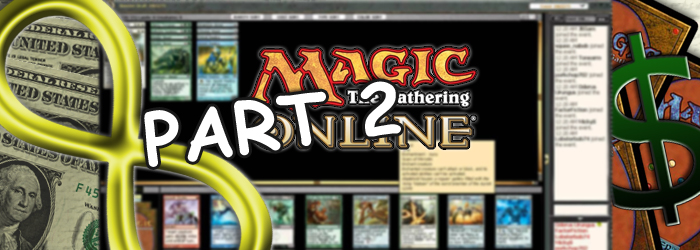

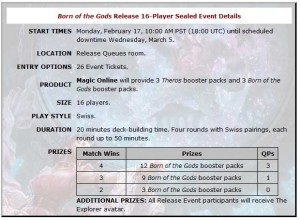

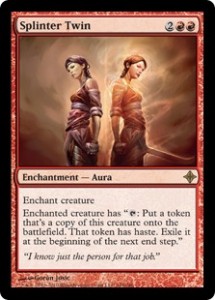
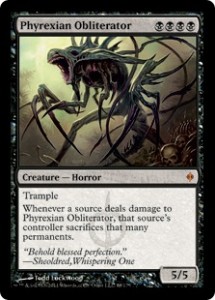
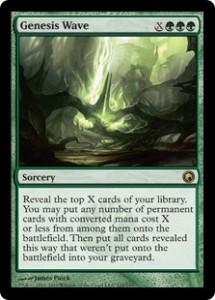
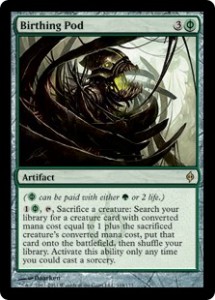
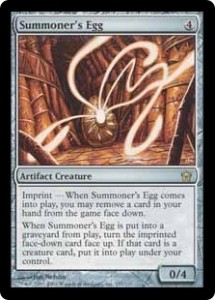
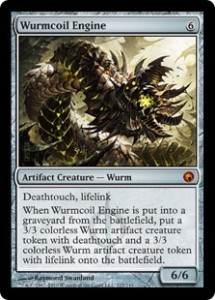


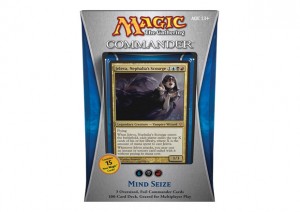





 to get started. Pick one of these two methods—the can doesn’t count—and find your Local Home Brew Shop (LHBS) and tell them what kind of beer you want to make and the method you want to use—they will take it from there! You may also want to pick up Charlie Papazian’s book The Complete Joy of Home Brewing to get a more detailed look at what is going on. Start with one of these methods. Don’t wait for the next article, just go do it now! If you choose the right style and plan properly, you can even be ready to bottle by the time the next Serum Visions is published.
to get started. Pick one of these two methods—the can doesn’t count—and find your Local Home Brew Shop (LHBS) and tell them what kind of beer you want to make and the method you want to use—they will take it from there! You may also want to pick up Charlie Papazian’s book The Complete Joy of Home Brewing to get a more detailed look at what is going on. Start with one of these methods. Don’t wait for the next article, just go do it now! If you choose the right style and plan properly, you can even be ready to bottle by the time the next Serum Visions is published.









 The example of Thalia can be applied to every spec you make. You should be trading for cards that are not as profitable to pay cash for but also have the potential to rise further. Using Thalia as a sleeper, how does that trade look if Thalia starts selling for $5 or $6 each? The key to this concept isn’t trading overpriced Standard cards into eternal staples. Instead, we use any overpriced to find cards that have a cash value closer to retail.
The example of Thalia can be applied to every spec you make. You should be trading for cards that are not as profitable to pay cash for but also have the potential to rise further. Using Thalia as a sleeper, how does that trade look if Thalia starts selling for $5 or $6 each? The key to this concept isn’t trading overpriced Standard cards into eternal staples. Instead, we use any overpriced to find cards that have a cash value closer to retail. to pay fees. At the same time, you made money and your trade partner feels like he got a deal. This practice won’t make you millions, but will provide just enough incremental value to make it worthwhile. It creates the opportunity to have a steady cash flow and cards that are in high demand no matter the season.
to pay fees. At the same time, you made money and your trade partner feels like he got a deal. This practice won’t make you millions, but will provide just enough incremental value to make it worthwhile. It creates the opportunity to have a steady cash flow and cards that are in high demand no matter the season.

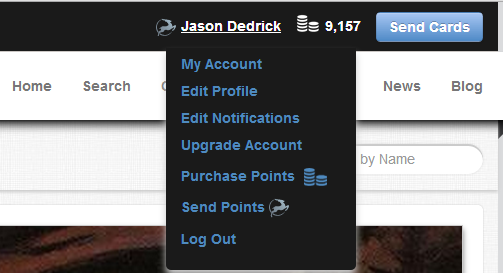
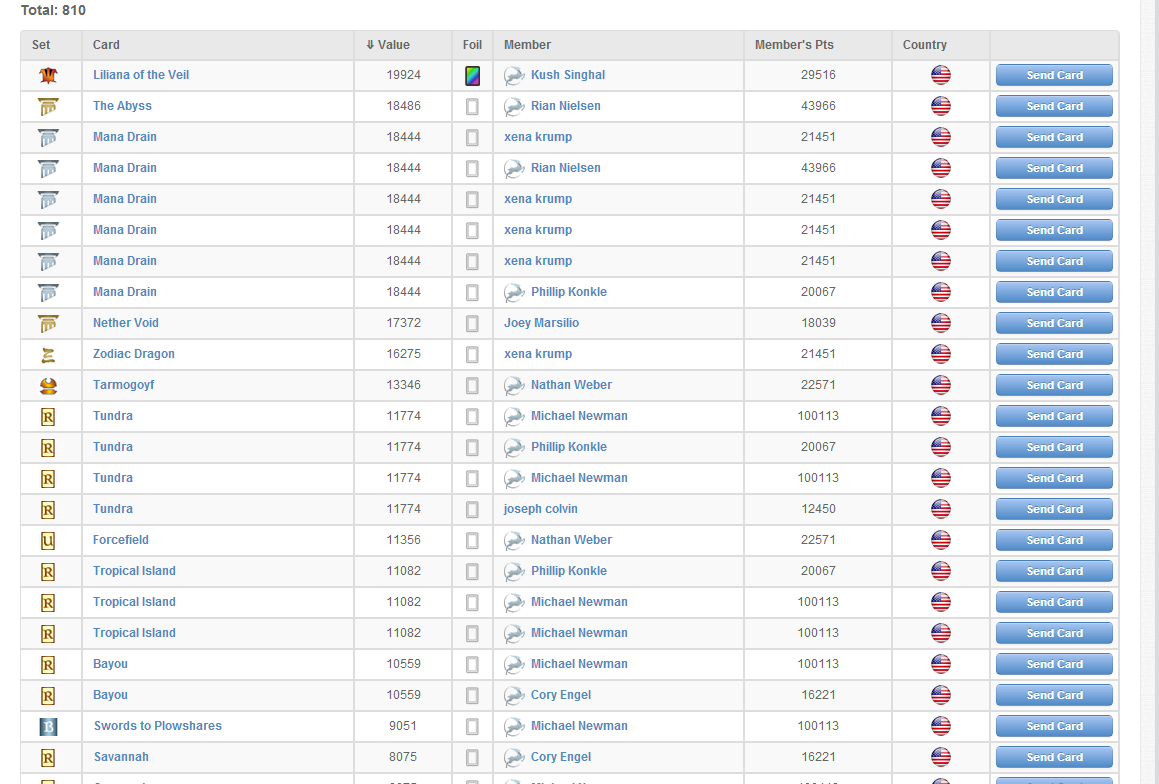

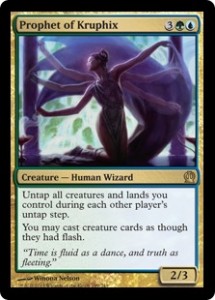
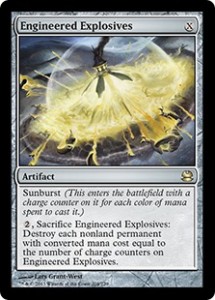

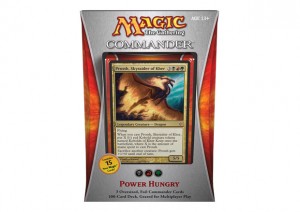



 best lands and mana artifacts within our price restrictions. Each archetype got one dual land and one mana rock—which one depended on the focus of the archetype.
best lands and mana artifacts within our price restrictions. Each archetype got one dual land and one mana rock—which one depended on the focus of the archetype. that aggro decks will be happy to main deck a [Card]Pillage[/Card] or [Card]Disenchant[/Card], because it could very well blow out an opponent that is relying on signets for fixing. I walked in late at my LGS one night and there was a six-man team cube draft going on. Two team members were looking at a decks and a comment was made that the deck just died to a [Card]Stone Rain[/Card] because the mana base was so greedy. In our case, we don’t run [Card]Stone Rain[/card], as there aren’t that many targets for it (compared to a normal cube). For this list, where the concentration of mana-fixing artifacts is very high, that comment translates rather well to [Card]Disenchant[/Card].
that aggro decks will be happy to main deck a [Card]Pillage[/Card] or [Card]Disenchant[/Card], because it could very well blow out an opponent that is relying on signets for fixing. I walked in late at my LGS one night and there was a six-man team cube draft going on. Two team members were looking at a decks and a comment was made that the deck just died to a [Card]Stone Rain[/Card] because the mana base was so greedy. In our case, we don’t run [Card]Stone Rain[/card], as there aren’t that many targets for it (compared to a normal cube). For this list, where the concentration of mana-fixing artifacts is very high, that comment translates rather well to [Card]Disenchant[/Card].
